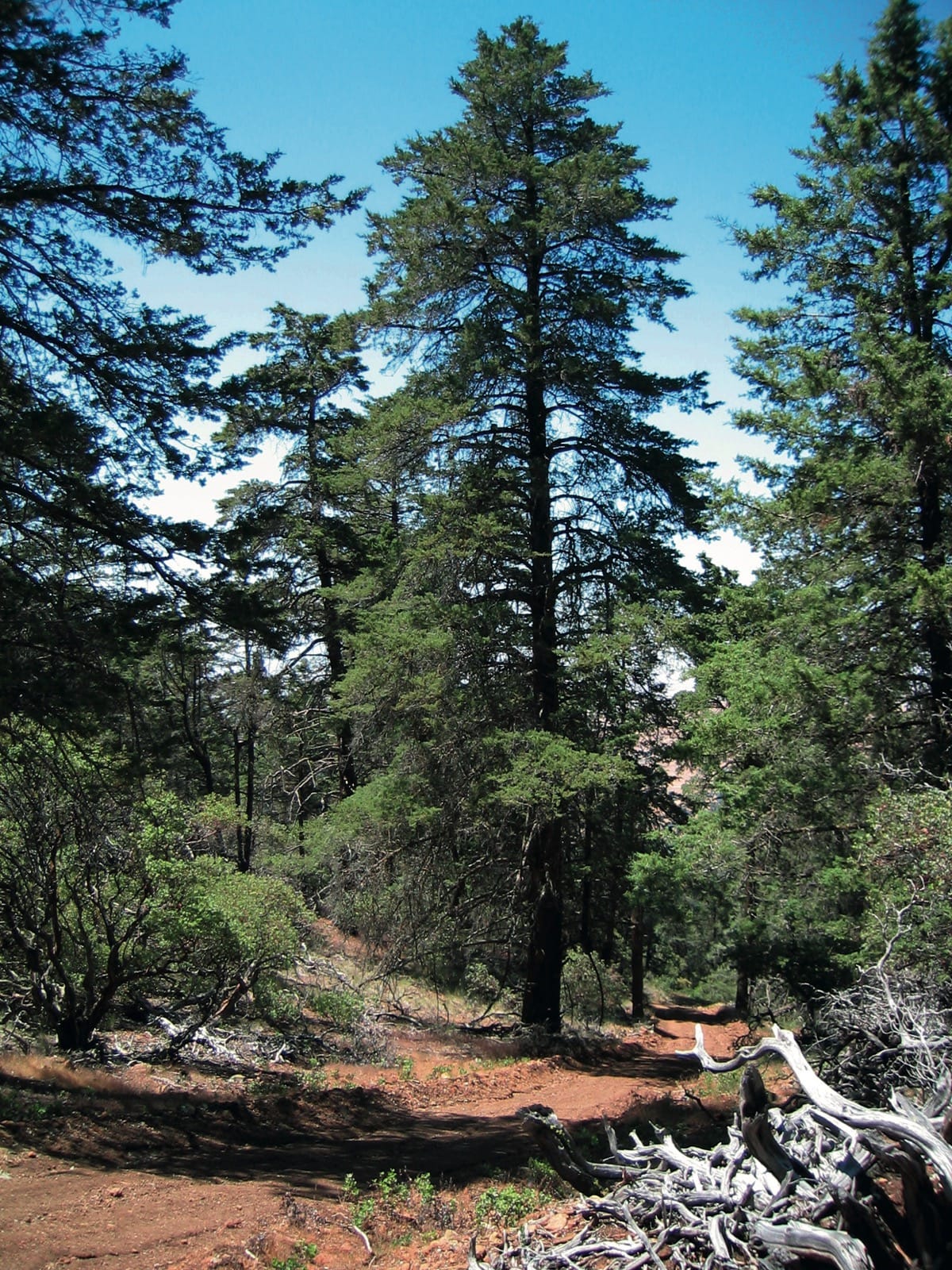Cupressus sargentii
Credits
Article from New Trees by John Grimshaw & Ross Bayton
Recommended citation
'Cupressus sargentii' from the website Trees and Shrubs Online (treesandshrubsonline.
Genus
Common Names
- Sargent Cypress
Other taxa in genus
- Cupressus arizonica
- Cupressus austrotibetica
- Cupressus bakeri
- Cupressus cashmeriana
- Cupressus chengiana
- Cupressus corneyana
- Cupressus duclouxiana
- Cupressus dupreziana
- Cupressus forbesii
- Cupressus funebris
- Cupressus gigantea
- Cupressus goveniana
- Cupressus himalaica
- Cupressus lusitanica
- Cupressus macnabiana
- Cupressus macrocarpa
- Cupressus sempervirens
- Cupressus torulosa
Tree to 25 m, though often a shrub of < 10 m, trunk straight and to 1 m dbh. Bark grey-brown to black, fibrous and splitting longitudinally, to 3 cm thick. Crown columnar and rather open, though in typical windswept habitat the crown becomes broader than tall. Branchlets rather inflexible, ultimate segments decussate. Juvenile leaves needle-like; mature leaves scale-like, dull green (though not glaucous), decussate, appressed, densely crowded; the lateral and facial pairs are similar, 1–2(–10) × 1(–4) mm, acute; leaf resin gland abaxial, inconspicuous, forming a shallow pit, usually inactive. Male strobili solitary and terminal, borne profusely on short, lateral branches, 0.3–0.4 × 0.2 cm, cylindrical to four-sided, with 10–12 peltate microsporophylls. Female cones axillary, usually solitary, on short, lateral branchlets, globose and valvate; initially 0.3–0.4 cm long and green, later turning glossy brown; in the second year becoming dull greyish brown with scattered resin blisters, 1.5–3 cm long. Seed scales in three to five decussate pairs, valvate, approximately 12 seeds per scale; umbo inconspicuous or to 0.4 cm long and prominent. Seeds dark brown, angular or flattened, glaucous; seed wings absent. Watson & Eckenwalder 1993, Farjon 2005c. Distribution USA: California (Coast Ranges). Habitat Chaparral, foothill woodlands and lower montane forest on serpentine soil, between 200 and 1100 m asl. USDA Hardiness Zone 9. Conservation status Lower Risk. Illustration NT290, NT301. Cross-reference K110.
In California this species tends to form a large, rounded tree when mature, sometimes assuming a more compact bushy shape in exposed sites, although it starts with a columnar shape. The foliage is a dusty-looking greyish green, and the whole tree can be coloured yellowish by the abundance of male strobili in spring (Peattie 1991). It is common over a wide area of western California. It is seldom seen in cultivation, although there are good specimens at Kew (13 m in 2001, TROBI) and Wakehurst Place (12 m in 2005), and some smaller specimens elsewhere.
Where they overlap in northern California, Cupressus sargentii occasionally hybridises with C. macnabiana, to form the only known naturally occurring hybrid between species of Cupressus. Given the often disjunct geographical ranges of the Cupressus species, this scarcity of natural hybrids is perhaps not surprising (Little 2004). In cultivation, hybrids have been produced by crossing C. macrocarpa Hartw. ex Gordon with both C. sempervirens L. and C. lusitanica Mill. The as-yet unnamed Californian hybrid is most easily identified by its partially formed leaf resin glands; also, the arrangement of the ultimate branch segments and the width of the female cones are both intermediate between the parent species. The F1 hybrids appear to be fertile and backcross with the parent species; some hybrids therefore look rather more similar to one parent species (for some character traits), instead of being intermediate (Little 2004). There is a specimen of this hybrid at Kew.


